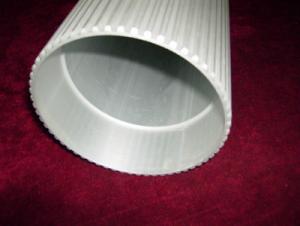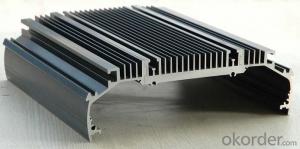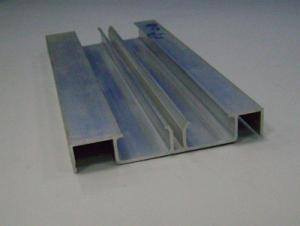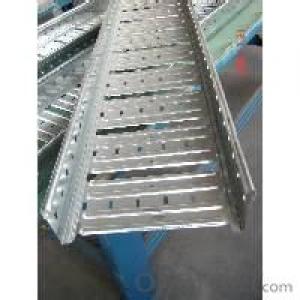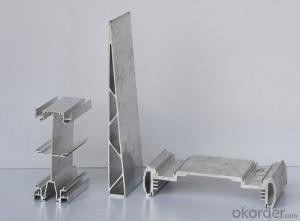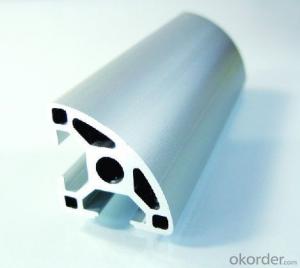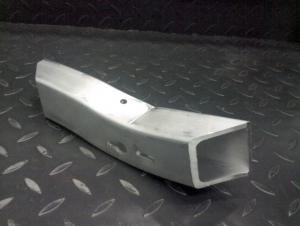Aluminum Extrusion Profiles Australia - Extruded Aluminum Profile
- Loading Port:
- China Main Port
- Payment Terms:
- TT OR LC
- Min Order Qty:
- -
- Supply Capability:
- -
OKorder Service Pledge
OKorder Financial Service
You Might Also Like
Aluminium Profile
Our advantages:
1)we can provide"one- stop service from melting,extruding,surface treatment,machining,welding,assembling to mould design & building.
2)we have a good capacity of precise machining,cnc machining.
3)we can provide good quality with reasonable price.
Products:
Description | Aluminium Profiles |
Alloy | Al 6063 T5 /T6 or 6061 or 6005 or as per customers' need |
Finish | Anodizing or powder coating with various colors |
Packing | Foam sheet,poly bag,plastic bag,carton |
Brand | YMJ |
Original place | |
Certificate | ISO9001 |
Equipments:
7extruders,2 six meters long anodizing lines,1 twelve meters long anodizing line(including dyeing & electrolysis).1 powder coating line,5 melting lines,12 CNCs(including 2 machines which can mill 6.5m long profile),10 argon arc welding machines and multiple machines for cutting,drilling,punching,milling,shearing and bending,2 spectrum scanners,1 projective instument,1 extension test machine,1 mechanical property tester,1 Rohs tester and 1 metallurgical microscope.
Service:
We're a well- established manufacture for aluminium products,we're confident we can give our customers complete satisfication.
We can provide good quality with reasonable price.
- Q: Can aluminum profiles be utilized as materials for constructing roofs?
- <p>Yes, aluminum profiles can be used for roofing materials. They are known for their durability, corrosion resistance, and lightweight properties, making them an excellent choice for roofing applications. Aluminum profiles can be shaped and joined to create a strong and weather-resistant roofing system. They are also easy to install and maintain, and can be recycled, contributing to their environmental sustainability.</p>
- Q: Are aluminum profiles suitable for use in the defense industry?
- Yes, aluminum profiles are suitable for use in the defense industry. Aluminum is a lightweight, yet strong material that offers excellent corrosion resistance and high durability. It is commonly used in the defense industry for applications such as military vehicles, aircraft structures, and weapon systems. Additionally, aluminum profiles can be easily customized and fabricated to meet specific requirements, making them a versatile choice for defense applications.
- Q: What are the methods to prevent water infiltration in the gaps between aluminum profiles during the installation process?
- <p>To prevent water from getting into gaps between aluminum profiles during installation, use high-quality sealants and gaskets. Ensure proper alignment and fit of the profiles to minimize gaps. Install weep holes to allow water to drain out. Apply a water-resistant membrane or flashing behind the profiles. Regularly inspect and maintain the installation to identify and fix any issues promptly. Proper installation techniques and materials selection are crucial to prevent water infiltration.</p>
- Q: Xi'an XAC aluminum sales site.
- How to choose the industrial aluminum profiles, this problem for the just contact with industrial aluminum profile friends, is really a serious problem to consider.That selection of industrial aluminum manufacturers is not good, money, goods is not good, he can give you redo is OK, but also take time; meet industrial aluminum manufacturers some black, and you may be wrangling, that egg pain.
- Q: Can aluminum profiles be used for exhibition booths?
- Yes, aluminum profiles can be commonly used for exhibition booths. Aluminum profiles are lightweight, durable, and easy to assemble, making them an ideal choice for constructing exhibition booths. Additionally, aluminum profiles offer flexibility in design and can be customized to suit specific requirements, making them a popular choice in the exhibition industry.
- Q: What is the terminology to explain the aluminum twist and bending and a sharp respectively.
- Curvature:1. longitudinal bending: the profile is placed on the platform, and when the weight is stable, the maximum gap between the bottom of the profile and the platform is measured along the length of the profile, that is, the longitudinal curvatureThe 2. longitudinal wave degree (or bend): the section on the platform, to achieve stability by self, the ruler will be 300mm long (or flat on the surface of the profile cutter) waves or hard along the length direction of a profile, profile measurement and rule (or ruler knife) between the maximum gap value that is, longitudinal wave degree (or bend).
- Q: Are aluminum profiles resistant to chemicals and acids?
- Yes, aluminum profiles are generally resistant to chemicals and acids. Aluminum has a natural oxide layer that provides corrosion resistance, making it suitable for various industrial applications. However, the level of resistance may vary depending on the specific type of chemical or acid being used, as some aggressive substances can still corrode aluminum. In such cases, additional protective coatings or surface treatments can be applied to enhance the resistance. It is always advisable to consult with experts or manufacturers to determine the compatibility of aluminum profiles with specific chemicals or acids in order to ensure optimal performance and durability.
- Q: This question asks about the various materials used for insulation purposes when working with aluminum profiles.
- <p>Different types of insulation materials used with aluminum profiles include thermal insulation materials such as polyurethane foam, mineral wool, and polystyrene. These materials help in reducing heat transfer and maintaining temperature control. Additionally, electrical insulation materials like PVC, polyethylene, and silicone rubber are used to prevent electrical conductivity and protect against electrical hazards. Acoustic insulation materials like fiberglass and soundproofing foam are also used to reduce noise transmission through aluminum structures. Each type of insulation serves a specific purpose and is chosen based on the application's requirements.</p>
- Q: Can aluminum profiles be used in the production of medical devices?
- Yes, aluminum profiles can be used in the production of medical devices. Aluminum is a lightweight and highly versatile material that is commonly used in the healthcare industry due to its excellent strength-to-weight ratio, corrosion resistance, and ease of sterilization. It can be shaped into different profiles to meet the specific requirements of medical devices, making it a suitable choice for various applications such as surgical instruments, diagnostic equipment, and prosthetics.
- Q: What are the advantages of using aluminum profiles in the railway industry?
- There are several advantages of using aluminum profiles in the railway industry. Firstly, aluminum is lightweight yet durable, which helps reduce the overall weight of the train and improve fuel efficiency. Secondly, aluminum profiles offer excellent corrosion resistance, ensuring the longevity and low maintenance of the railway components. Additionally, aluminum profiles are highly recyclable, making them environmentally friendly. Moreover, aluminum's excellent thermal conductivity allows for efficient heat dissipation, ensuring the safety and performance of electrical systems in the railway industry. Lastly, aluminum profiles offer design flexibility, making it easier to create complex shapes and structures, ultimately enhancing the aesthetics and functionality of railway components.
Send your message to us
Aluminum Extrusion Profiles Australia - Extruded Aluminum Profile
- Loading Port:
- China Main Port
- Payment Terms:
- TT OR LC
- Min Order Qty:
- -
- Supply Capability:
- -
OKorder Service Pledge
OKorder Financial Service
Similar products
Hot products
Hot Searches
Related keywords
